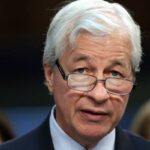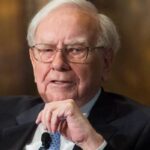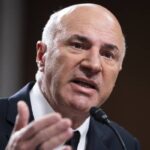We adhere to strict standards of editorial integrity to help you make decisions with confidence. Some or all links contained within this article are paid links.
Headline inflation has eased in the U.S., but according to economist and former Treasury Secretary Larry Summers, soaring prices may persist amid President Donald Trump’s tariff plans.
“Developments in the last 24 hours suggest we may be headed for serious financial crisis wholly induced by US government tariff policy,” Summers wrote in a post on X on April 9.
Don’t miss
- I’m 49 years old and have nothing saved for retirement — what should I do? Don’t panic. Here are 5 of the easiest ways you can catch up (and fast)
- Gain potential quarterly income through this $1B private real estate fund — even if you’re not a millionaire. Here’s how to get started with as little as $10
- Car insurance premiums could spike 8% by the end of 2025 — thanks to tariffs on car imports and auto parts from Canada and Mexico. But here’s how 2 minutes can save you hundreds of dollars right now
Though inflation rates have come down from the pandemic highs, Trump’s tariffs might reverse the progress. The Federal Reserve, after slashing rates twice last year, announced a brief pause in January.
What’s more, 90% of chief financial officers across large organizations in the U.S. have rung warning bells regarding a resurgence of inflation and potential economic slowdown, according to the latest quarterly CNBC CFO Council survey.
Federal Reserve Chairman Jerome Powell echoed these sentiments, saying that Trump’s “Liberation Day” tariffs were “significantly larger than expected.”
“The same is likely to be true of the economic effects, which will include higher inflation and slower growth,” Powell said in early April.
Summers, a vocal critic of the Trump administration, stated that the latest tariff policies made “little sense.”
“If any administration of which I was a part had launched an economic policy so totally ungrounded in serious analysis or so dangerous and damaging, I would have resigned in protest,” he wrote in a different post on X on April 3.
Inflation impacts everyone by eroding the purchasing power of money. If you share Summers’ concerns, here are three strategies to potentially guard against its impact.
Invest in real estate to hedge against inflation
Real estate has long been considered a hedge against inflation thanks to its intrinsic value and income-generating potential.
When inflation rises, property values often increase as well, reflecting the higher costs of materials, labor and land. At the same time, rental income tends to go up, providing landlords with a revenue stream adjusted for inflation. This combination makes real estate an attractive option for preserving and growing wealth during periods of ever-increasing prices.
If you’re an accredited investor, First National Realty Partners (FNRP) allows you to invest in necessity-based commercial real estate.
FNRP has developed relationships with the nation’s largest grocery-anchored brands, including Kroger, Walmart, and Whole Foods. With a minimum investment of $50,000, accredited investors can access promising real estate investments.
Their team makes investing in commercial real estate simple by offering white-glove services to investors. FNRP acts as the deal leader, providing expertise and doing the legwork, while investors can use their secure platform to explore available deals, engage with experts and easily make an allocation.
You can also get into real estate by investing in hand-picked rental properties. One way you can tap into this market is by investing in shares of vacation homes or rental properties through Arrived.
Backed by world-class investors, including Jeff Bezos, Arrived allows you to invest in shares of residential properties to earn passive income without the operational headaches that come with managing your own rental.
To get started, simply browse through Arrived’s selection of pre-vetted properties, each selected for their appreciation and income generation potential. Once you choose a property, you can start investing with as little as $100.
Read more: Want an extra $1,300,000 when you retire? Dave Ramsey says this 7-step plan ‘works every single time’ to kill debt, get rich in America — and that ‘anyone’ can do it
Diversify your retirement portfolio with gold
Gold is another popular long-term hedge against inflation.
The reasoning is simple: Gold can’t be printed in unlimited quantities by central banks like fiat money. Because its value isn’t tied to any one currency or economy, diversifying into gold can provide some protection during periods of economic uncertainty. This unique characteristic has led to a reputation for being a “safe haven” asset.
In other words, gold’s appeal as a stable store of value typically grows when inflation erodes the purchasing power of currencies.
Investors have already taken note of gold’s resilience. In fact, gold has increased in value sevenfold over the last 100 years. Even better, in 2025, gold prices have surpassed $3,000 per ounce.
Opting for a gold IRA gives you the opportunity to hedge against market volatility by allowing you to invest directly in physical precious metals rather than stocks and bonds.
Priority Gold is a particularly good fit for those looking to diversify their portfolios, add gold to an IRA or learn more about investing in previous metals. Plus, Priority Gold has an A+ rating from the Better Business Bureau and a 5-star rating from Trust Link.
If you’d like to convert an existing IRA into a gold IRA, Priority Gold also offers a 100% free rollover, not to mention free shipping and free storage for up to five years. Qualifying purchases can also receive up to $10,000 in free silver.
To learn more about how Priority Gold can help you reduce inflation’s impact on your nest egg you can download their free 2025 gold investor bundle.
Purchase contemporary art as an investment
It’s easy to see why great works of art tend to appreciate — especially during times of inflation. Supply is limited, and many famous pieces have already been snatched up by museums and collectors.
For example, in 2022, shortly after inflation reached a 40-year high, the art collection of late Microsoft co-founder Paul Allen sold for a total of $1.5 billion at Christie’s New York, making it the most valuable private collection of all time. As such, art can be a popular way to diversify a portfolio because it’s a tangible asset with little correlation to the stock market.
Traditionally, investing in art has been a privilege reserved for the ultra-wealthy.
But now, investors of all experience levels can invest in the art world.
Masterworks is a platform for investing in shares of blue-chip artwork by renowned artists, including Pablo Picasso, Jean-Michel Basquiat, and Banksy. Masterworks is easy to use and has had 23 successful exits to date, every one of them profitable. Even better, postwar and contemporary art prices have outpaced the S&P by 64% between 1995 and 2023, according to Masterworks.
How it works is simple: Start by browsing Masterworks’ impressive $1 billion portfolio of paintings and choose how many shares you’d like to buy. Masterworks will handle all the details, making high-end art investments both accessible and effortless.
Masterworks has already sold over $61 million worth of art, including the principal, and distributed the proceeds to everyday investors. What’s more, the art market had almost no correlation with the S&P 500 between 1995 and 2024, according to the MW All Art Index, which can make an investment in fine art worth considering for your portfolio.
What to read next
- Thanks to Jeff Bezos, you can now become a landlord for as little as $100 — and no, you don’t have to deal with tenants or fix freezers. Here’s how
- Here are 5 ‘must have’ items that Americans (almost) always overpay for — and very quickly regret. How many are hurting you?
- Trump warns his tariffs will spark a ‘disturbance’ in America — use this 1 dead-simple move to help shockproof your retirement plans ASAP
This article provides information only and should not be construed as advice. It is provided without warranty of any kind.









